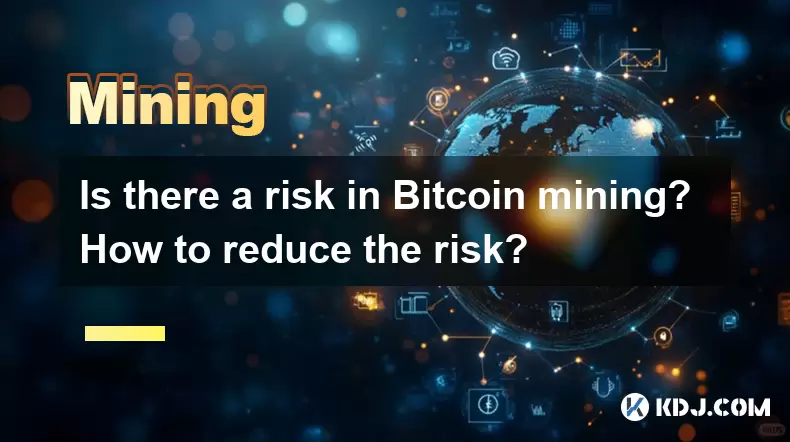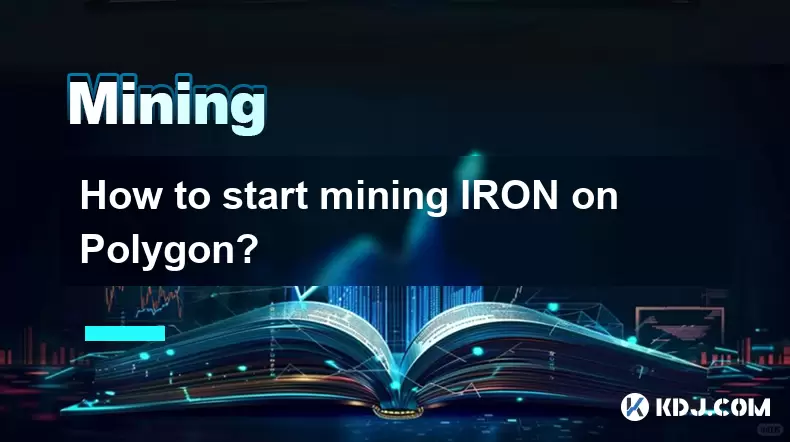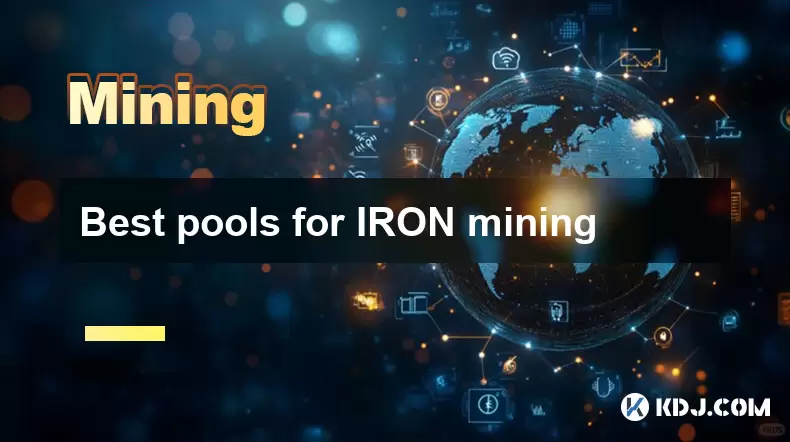-
 Bitcoin
Bitcoin $119800
1.38% -
 Ethereum
Ethereum $3873
3.25% -
 XRP
XRP $3.247
1.85% -
 Tether USDt
Tether USDt $1.001
0.02% -
 BNB
BNB $840.4
5.94% -
 Solana
Solana $190.0
2.55% -
 USDC
USDC $1.000
0.03% -
 Dogecoin
Dogecoin $0.2433
2.69% -
 TRON
TRON $0.3197
-0.05% -
 Cardano
Cardano $0.8367
1.39% -
 Sui
Sui $4.327
3.11% -
 Hyperliquid
Hyperliquid $44.00
0.31% -
 Stellar
Stellar $0.4461
1.76% -
 Chainlink
Chainlink $19.25
4.61% -
 Hedera
Hedera $0.2941
3.90% -
 Bitcoin Cash
Bitcoin Cash $598.4
6.89% -
 Avalanche
Avalanche $26.19
4.67% -
 Litecoin
Litecoin $115.1
0.50% -
 Shiba Inu
Shiba Inu $0.00001427
1.55% -
 Toncoin
Toncoin $3.379
2.01% -
 UNUS SED LEO
UNUS SED LEO $8.966
-0.16% -
 Ethena USDe
Ethena USDe $1.001
0.02% -
 Uniswap
Uniswap $11.04
4.16% -
 Polkadot
Polkadot $4.239
2.00% -
 Monero
Monero $324.6
0.36% -
 Bitget Token
Bitget Token $4.672
2.46% -
 Pepe
Pepe $0.00001294
2.69% -
 Dai
Dai $0.0000
0.01% -
 Cronos
Cronos $0.1443
2.71% -
 Aave
Aave $302.9
1.98%
Is there a risk in Bitcoin mining? How to reduce the risk?
Bitcoin mining is risky due to high initial costs, price volatility, and regulatory changes. Mitigate risks by researching, diversifying, joining pools, and staying updated on regulations.
May 14, 2025 at 05:35 pm

Is there a risk in Bitcoin mining? How to reduce the risk?
Bitcoin mining, the process of verifying and adding transactions to the blockchain, is a lucrative yet risky venture. Miners compete to solve complex mathematical problems, and the first to succeed earns newly minted bitcoins. However, the endeavor is not without its challenges and potential pitfalls. Understanding these risks and learning how to mitigate them is crucial for anyone considering entering the Bitcoin mining industry.
The Risks of Bitcoin Mining
Bitcoin mining involves several inherent risks that miners must be aware of. These risks can impact the profitability and sustainability of mining operations. Some of the primary risks include:
1. High Initial Investment
Bitcoin mining requires significant upfront investment in hardware, such as Application-Specific Integrated Circuit (ASIC) miners, as well as ongoing expenses like electricity and cooling systems. The cost of these components can be prohibitively high, especially for new entrants.
2. Volatility of Bitcoin Price
The price of Bitcoin is notoriously volatile, which can significantly affect the profitability of mining operations. If the price of Bitcoin drops sharply, the revenue generated from mining may not cover the operational costs, leading to financial losses.
3. Difficulty Adjustments
The Bitcoin network adjusts the mining difficulty approximately every two weeks to maintain a consistent block time of about 10 minutes. As more miners join the network, the difficulty increases, making it harder to mine new blocks and reducing the potential rewards for individual miners.
4. Regulatory Risks
Various governments around the world have different stances on cryptocurrency mining, ranging from supportive to highly restrictive. Changes in regulations can impact the legality and feasibility of mining operations, potentially leading to shutdowns or fines.
5. Hardware Obsolescence
The rapid pace of technological advancement in mining hardware means that today's state-of-the-art ASIC miners can quickly become outdated. Miners must continuously upgrade their equipment to stay competitive, which can be costly.
6. Electricity Costs
Mining consumes a significant amount of electricity, and the cost of power can vary widely depending on location. High electricity costs can eat into profits, making it essential to find locations with affordable energy rates.
Strategies to Reduce Mining Risks
While the risks associated with Bitcoin mining are substantial, there are several strategies that miners can employ to mitigate these risks and enhance their chances of success.
1. Thorough Research and Planning
Before investing in mining equipment, it is crucial to conduct thorough research and develop a comprehensive business plan. This should include an analysis of the current market conditions, an estimate of the break-even point, and a strategy for dealing with potential downturns in Bitcoin's price.
- Research current market trends and understand the factors that influence Bitcoin's price.
- Calculate the break-even point by considering the cost of hardware, electricity, and other operational expenses.
- Develop a contingency plan for scenarios where the price of Bitcoin drops or mining difficulty increases.
2. Diversification of Investments
Diversifying investments can help spread the risk associated with Bitcoin mining. This can be achieved by investing in different types of cryptocurrencies, exploring alternative mining opportunities, or even investing in other sectors unrelated to cryptocurrencies.
- Invest in multiple cryptocurrencies to reduce the impact of volatility in any single asset.
- Explore alternative mining opportunities such as mining other cryptocurrencies that may have lower difficulty levels or higher profitability.
- Consider diversifying into other sectors to balance the risk associated with cryptocurrency investments.
3. Joining Mining Pools
Joining a mining pool can help reduce the risk of inconsistent rewards. Mining pools combine the computational resources of multiple miners, increasing the chances of solving the mathematical problems required to mine new blocks. The rewards are then distributed among pool members based on their contribution.
- Research reputable mining pools with a track record of consistent payouts and low fees.
- Understand the pool's reward distribution system to ensure it aligns with your mining goals.
- Monitor the performance of the pool and be prepared to switch if necessary to maximize profitability.
4. Energy Efficiency and Location
Choosing the right location for mining operations can significantly impact profitability. Regions with low electricity costs and favorable climates for cooling equipment can help reduce operational expenses.
- Research regions with low electricity costs and consider relocating mining operations to these areas.
- Optimize the cooling systems to reduce energy consumption and improve overall efficiency.
- Consider renewable energy sources such as solar or wind power to further reduce electricity costs and enhance sustainability.
5. Regular Hardware Upgrades
Staying up-to-date with the latest mining hardware can help maintain competitiveness in the ever-evolving landscape of Bitcoin mining. Regularly upgrading equipment ensures that miners can take advantage of the latest technological advancements and improve their mining efficiency.
- Monitor the market for new ASIC miners and assess their potential impact on your mining operations.
- Plan for periodic upgrades to replace outdated equipment and maintain optimal performance.
- Consider leasing or renting hardware as an alternative to purchasing, which can provide flexibility and reduce the financial burden of upgrades.
6. Staying Informed About Regulatory Changes
Keeping abreast of regulatory developments in the cryptocurrency space is essential for mitigating regulatory risks. Miners should stay informed about changes in laws and regulations that could affect their operations and be prepared to adapt accordingly.
- Regularly check for updates from regulatory bodies and cryptocurrency news sources.
- Join industry associations or forums to stay connected with other miners and share information about regulatory changes.
- Consult with legal experts to ensure compliance with local regulations and to navigate any potential legal challenges.
Frequently Asked Questions
1. Can I mine Bitcoin profitably with a regular computer?
Mining Bitcoin with a regular computer is not profitable due to the high computational power required and the low rewards compared to the energy costs. ASIC miners, specifically designed for Bitcoin mining, are necessary for profitable mining operations.
2. How long does it take to break even on Bitcoin mining investments?
The break-even point for Bitcoin mining investments varies based on factors such as the cost of hardware, electricity rates, and the current price of Bitcoin. It can range from a few months to over a year, depending on these variables.
3. Are there any tax implications for Bitcoin mining?
Yes, there are tax implications for Bitcoin mining. Miners may be required to report their mining income as self-employment income or capital gains, depending on the jurisdiction. It is advisable to consult with a tax professional to understand the specific tax obligations in your area.
4. What are the environmental concerns associated with Bitcoin mining?
Bitcoin mining consumes a significant amount of electricity, leading to concerns about its environmental impact. Miners can mitigate these concerns by using renewable energy sources and improving the energy efficiency of their operations.
Disclaimer:info@kdj.com
The information provided is not trading advice. kdj.com does not assume any responsibility for any investments made based on the information provided in this article. Cryptocurrencies are highly volatile and it is highly recommended that you invest with caution after thorough research!
If you believe that the content used on this website infringes your copyright, please contact us immediately (info@kdj.com) and we will delete it promptly.
- Bitcoin's Potential Final Rally: Decoding Historical Data and Future Projections
- 2025-07-28 06:30:11
- BlockDAG, XRP, and Utility-Driven Growth: A New Era for Crypto?
- 2025-07-28 06:30:11
- Token Unlocks and Altcoin Mania: A Wild Week Ahead!
- 2025-07-28 04:30:12
- Pi Network: Price Prediction, New Buy Feature, and the Road Ahead
- 2025-07-28 04:50:11
- Hayden Davis's LIBRA Token: From Investment Promise to Memecoin Mayhem
- 2025-07-28 04:30:12
- AI Tokens on CoinMarketCap: The New Millionaire Maker?
- 2025-07-28 04:35:18
Related knowledge

What was the highest APY for IRON mining?
Jul 23,2025 at 05:14am
Understanding IRON Token and Its Mining MechanismThe IRON token is a stablecoin that operates within the Iron Finance ecosystem, primarily on blockcha...

What is impermanent loss in IRON pools?
Jul 23,2025 at 09:00am
Understanding Impermanent Loss in the Context of IRON PoolsImpermanent loss is a phenomenon that affects liquidity providers in decentralized finance ...

How to claim rewards from IRON mining?
Jul 23,2025 at 02:21pm
Understanding IRON Mining and Reward MechanismsIRON Finance operated as a decentralized finance (DeFi) protocol on the Polygon and Binance Smart Chain...

IRON mining tutorial for beginners
Jul 27,2025 at 12:01am
What Is IRON and How Does It Work in the Cryptocurrency Ecosystem?IRON is a cryptocurrency token that operates on the Binance Smart Chain (BSC) and is...

How to start mining IRON on Polygon?
Jul 23,2025 at 08:00pm
Understanding IRON and Its Role on PolygonIRON is a decentralized, algorithmic stablecoin designed to maintain a 1:1 peg with the US dollar. It operat...

Best pools for IRON mining
Jul 26,2025 at 03:56am
Understanding IRON Mining and Its Unique MechanismIRON (Iron Finance) was a decentralized finance (DeFi) project that aimed to create a multi-chain al...

What was the highest APY for IRON mining?
Jul 23,2025 at 05:14am
Understanding IRON Token and Its Mining MechanismThe IRON token is a stablecoin that operates within the Iron Finance ecosystem, primarily on blockcha...

What is impermanent loss in IRON pools?
Jul 23,2025 at 09:00am
Understanding Impermanent Loss in the Context of IRON PoolsImpermanent loss is a phenomenon that affects liquidity providers in decentralized finance ...

How to claim rewards from IRON mining?
Jul 23,2025 at 02:21pm
Understanding IRON Mining and Reward MechanismsIRON Finance operated as a decentralized finance (DeFi) protocol on the Polygon and Binance Smart Chain...

IRON mining tutorial for beginners
Jul 27,2025 at 12:01am
What Is IRON and How Does It Work in the Cryptocurrency Ecosystem?IRON is a cryptocurrency token that operates on the Binance Smart Chain (BSC) and is...

How to start mining IRON on Polygon?
Jul 23,2025 at 08:00pm
Understanding IRON and Its Role on PolygonIRON is a decentralized, algorithmic stablecoin designed to maintain a 1:1 peg with the US dollar. It operat...

Best pools for IRON mining
Jul 26,2025 at 03:56am
Understanding IRON Mining and Its Unique MechanismIRON (Iron Finance) was a decentralized finance (DeFi) project that aimed to create a multi-chain al...
See all articles

























































































